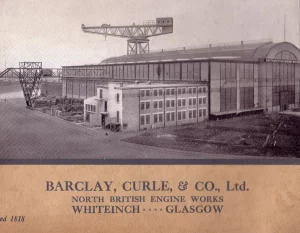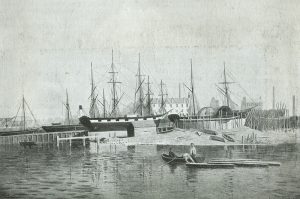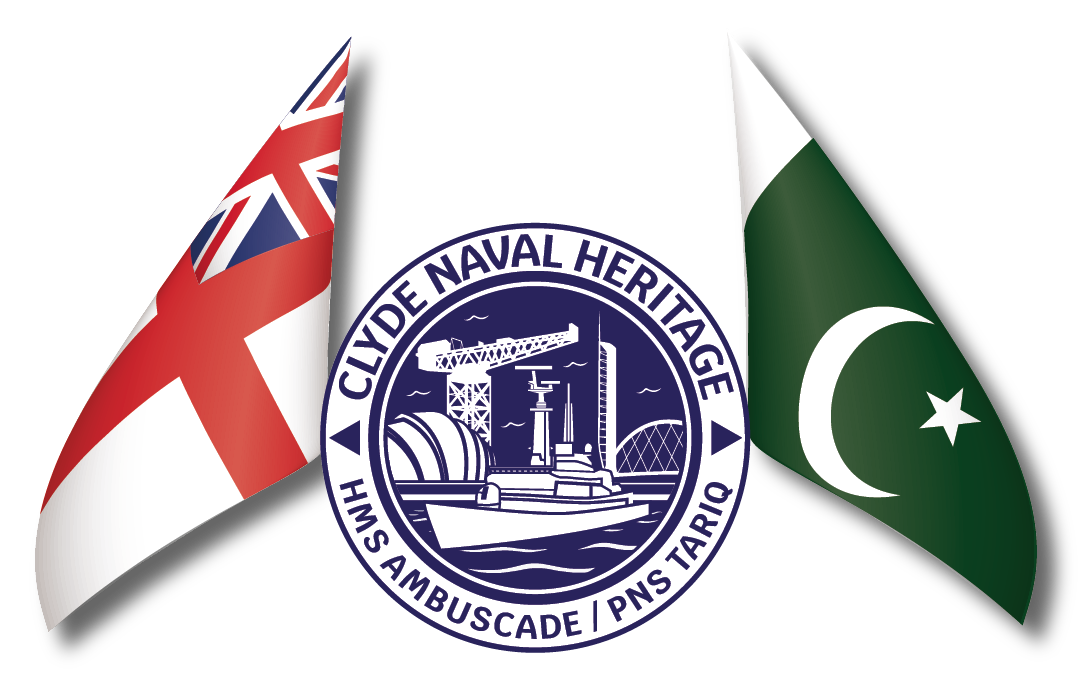Barclay Curle & Co. Ltd was one of the most significant shipbuilding companies in Scotland, particularly noted for its role in ship construction in the Whiteinch district of Glasgow. Established in the 19th century, the company played a pivotal role in Glasgow’s industrial boom and contributed greatly to Britain’s maritime power.
Founding and Early Years (1818 – 1855)
Barclay Curle & Co. Ltd was founded in 1818 by Robert Barclay, a shipbuilder from a prominent Glasgow family. Originally located in Stobcross, near the River Clyde, the company started as a modest shipbuilding yard primarily engaged in constructing wooden sailing vessels. As the demand for larger and more efficient ships grew in the mid-19th century, Barclay Curle began adopting iron shipbuilding techniques, marking its transition into a major industrial player.
In 1855, the company merged with another Glasgow shipbuilder, Curle & Co., which brought together the resources and expertise of two leading shipbuilding families. The merged entity took the name Barclay Curle & Co. Ltd and consolidated its position as a significant force in the Clyde shipbuilding industry.

Expansion to Whiteinch and Growth in Steamship Production (1860s – 1900s)
During the 1860s, Barclay Curle shifted its operations from Stobcross to a larger and more strategically advantageous location at Whiteinch, further down the River Clyde. This move was part of a broader effort to expand the company’s production capacity in response to the increasing demand for steam-powered vessels, which were rapidly replacing sail-powered ships.
The new Whiteinch yard covered a sprawling area, allowing Barclay Curle to construct larger and more complex vessels. The company specialized in building steamships, and over the years became a leading supplier of ocean liners, cargo ships, and warships. These ships were critical to the expansion of the British Empire’s global trade network and naval supremacy. Notable ships built at the Whiteinch yard during this period include various vessels for the British Admiralty and merchant marine fleets.
Technological Advancements and Specialization (1900 – 1918)
As the 20th century dawned, Barclay Curle continued to modernize and diversify its operations. In 1912, the company acquired the Clydeholm Engineering Works, a key step in vertical integration, which allowed them to produce engines and other components for their ships in-house. The company became adept at producing steam turbines and other propulsion systems for large vessels.
During World War I, Barclay Curle was heavily involved in war production, building troop transports, supply ships, and warships for the British government. The war created high demand for shipbuilding, and the Whiteinch yard operated at full capacity, employing thousands of workers and producing several notable vessels.
The company also developed expertise in producing dredgers and icebreakers, which were essential for global port operations and navigation in challenging environments.

Post-War Expansion and the Depression (1918 – 1939)
After World War I, the demand for commercial vessels surged as global trade resumed. Barclay Curle was able to capitalize on this by building numerous merchant ships. However, the 1920s also saw the rise of competition from other shipyards across Europe, and by the late 1920s, the effects of the Great Depression began to take a toll on global shipping.
Despite the economic downturn, Barclay Curle managed to stay afloat during the Depression. The company diversified its operations by continuing its work in engineering and taking on repair work for existing ships. The demand for new ships, however, slowed dramatically, leading to a reduction in workforce and ship production.

World War II and Peak Production (1939 – 1945)
World War II marked another period of intense activity for Barclay Curle & Co. Ltd. The Whiteinch yard was vital in building ships to support the Allied war effort. The company constructed a wide variety of vessels, including destroyers, frigates, and escort ships, which were critical in maintaining supply lines and countering the threat of German U-boats in the Atlantic.
During this time, the shipyard operated under intense pressure, and production reached its peak. Thousands of workers were employed at the Whiteinch facility, and the shipyard was a bustling hub of activity.
Post-War Decline and Nationalization (1945 – 1968)
The end of World War II brought a significant reduction in demand for new ships, as many countries faced economic rebuilding. In the post-war years, Barclay Curle, like many British shipbuilders, struggled to compete with the emerging shipyards of Japan and other countries that had invested heavily in modernizing their facilities.
By the 1950s, the company was facing increasing financial difficulties. The Clyde shipbuilding industry as a whole was in decline due to a combination of factors: outdated infrastructure, high labour costs, and stiff international competition. The shipbuilding yards on the Clyde, including Barclay Curle, were unable to keep up with these changes.
In 1968, as part of the British government’s strategy to salvage the shipbuilding industry, Barclay Curle was nationalized and became part of Upper Clyde Shipbuilders (UCS), a conglomerate formed to consolidate several of the struggling shipyards along the River Clyde.

Closure and Legacy (1971 – Present)
Despite efforts to rescue the industry, Upper Clyde Shipbuilders collapsed in 1971, leading to the closure of many of its constituent yards, including Barclay Curle’s Whiteinch facility. The closure marked the end of over 150 years of shipbuilding at Whiteinch and was a significant loss for the local economy and the shipbuilding heritage of the River Clyde.
While shipbuilding at Whiteinch ceased, Barclay Curle’s engineering division continued to operate in a limited capacity. In the 1980s, the site was taken over by the North British Marine Group, which focused on ship repairs rather than new construction.
Today, the legacy of Barclay Curle & Co. Ltd lives on as part of Scotland’s rich maritime history. The site of the former shipyard is now a mix of industrial and commercial development, but the contributions made by Barclay Curle to global shipping, British industry, and the history of the River Clyde remain significant.

